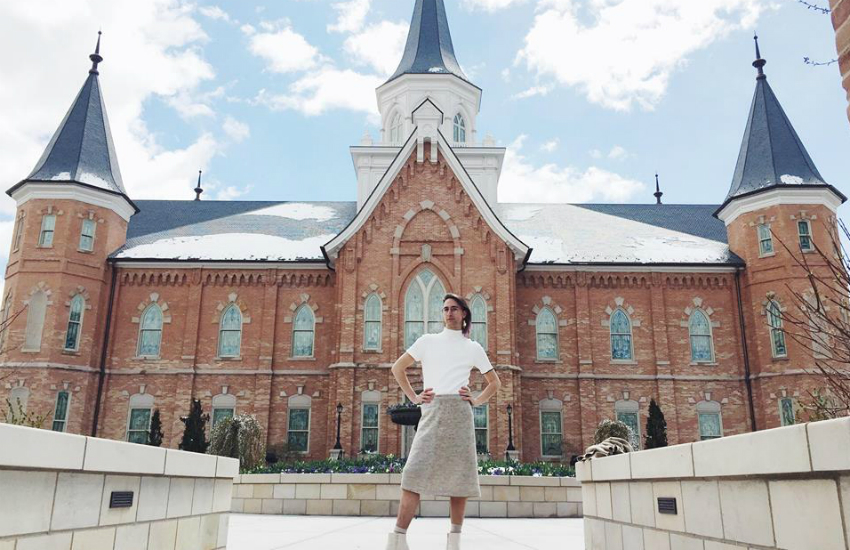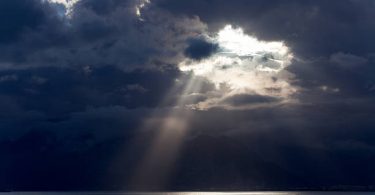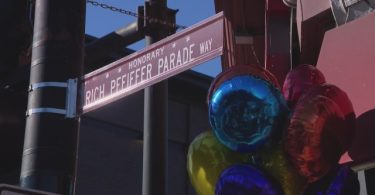Jamey Jesperson is a New York City-based LGBTI activist. They recently penned an essay for Into about the Mormon Church’s decision to break from the Boy Scouts after their decision to admit girls.
For Jesperson, a former Boy Scout, this incident just furthered their belief that the Church of Latter Day Saints (LDS) fails LGBTI youth.
‘The Mormon Church’s separation from progressive policies such as this is inextricably connected to an ongoing legacy of steadfastness to deeply-rooted sexist and LGBTQ-exclusionary policies. Mormon culture is not yet ready to break open the gender binary. As a result, they are further distancing themselves from a wider revolution forcing us as a society to rethink gender as no longer binary but a spectrum,’ they wrote.
Jesperson’s background
Jesperson grew up in California to a family of devout Mormons. They always knew they were different, though.
‘Growing up in a hyper-conservative Mormon culture, I knew that actualizing my authentic gender expression beyond the strict binary of boy/girl would not be an option until I could eventually escape the community and ideology I was born into altogether,’ they tell GSN.
‘I expressed my gender in a very feminine manner from a young age and, in return, experienced a lot of policing. I remember from as early as five years old being reprimanded by older men at Church for playing with certain toys in nursery or only hanging out with the girls my age. This kind of interpellation occurred both through direct discipline, but also ongoing bullying by kids my age as well.’
‘As a response, I quickly learned how to code-switch between being authentic and flamboyant in front of friends I felt safe with, and then performing the narrow and strict expression of boyhood/masculinity expected of me in front of adults. Of course, having to constantly alter your personality and perform a gender that always felt unnatural to you definitely takes a toll, and, for me at least, ended up very tangibly affecting my health as a child.’
Coming out
In high school, Jesperson came out as gay. They didn’t come out as gender-nonconforming until age 21.
‘Unsurprisingly, many other transfeminine and gender non-conforming adults I’ve met were also forced to traverse through more accepted, dominant identity markers like “gay” or “lesbian” before finding the language and consciousness to name our actual identities.’
‘Coming out in a family that was connected to a large Mormon community known for having a judgmental, gossip culture was also terrifying. It took several months of me grappling with how to have the talk with my parents, and when exactly I should do it. Fortunately I was dating someone who had been through the same process a year prior and had a Pastor as a dad, so he was able to provide support, reassurance, and, most importantly, caution, towards how to go about doing this.’
Luckily, Jesperson’s parents were supportive of their queer identity.
‘I always say that I am only able to do LGBTQ advocacy work as a young adult and be in close proximity to the challenges young queer people are facing because of the way my parents positively responded to my coming out, and allowed me to flourish and explore as a queer young personal. They’ve always parented through the value of love and openness, so, despite having some trouble accepting the fact that I wouldn’t grow up into the straight man (and have a simple life) like they always assumed I would, they were extremely supportive.’
However, their extended family and the LDS Church at large were not as supportive.
‘Some other family members were also supportive, but, for the most part, extended family and our Church community became quite hostile,’ they recall.
‘From completely ignoring me at social events, instructing their children to not be around me, or pulling me aside to remind me that my lifestyle went away from God’s plan, I knew immediately that the Mormon community was one I needed to escape as soon as possible in order to survive.’
The escape
Jesperson did eventually escape. They went to college at The New School in New York City, a historically progressive institution.
‘It was three months into my first college semester—when I found myself sitting in a Gender Studies and a Cultural Studies class—when my world exploded,’ they say.
‘Most people don’t know this, but I was probably the most devout to the Mormon faith when I was 18/19 years old and had just moved to New York. This was because, growing up, I learned that the only mechanism of coping with fear, isolation, and depression is through scripture and prayer. My increased devotion to Mormon doctrine of course was paired with an onslaught of preaching and teaching about homosexuality as a sin and gross reinforcement of binary gender roles, particularly because the repeal of the Defense of Marriage Act (DOMA) was all over the news at the time as well.’
Leaving the Church
‘It was after weeks of being exposed to ideologies, literature, and cultures from all over the world at the progressive Liberal Arts college I attended at The New School that I began to break down the shell Mormonism worked so hard to build around my brain and recognize that I did not have to accept the path laid in front of me.’
‘It was actually during a sacrament meeting by our Bishop when I had an awakening. He was passionately speaking about how the wrath of God would fall upon our country if we repeal DOMA and how homosexuality was the greatest sin when something in my brain went off, I stood up in the middle of his sermon, thought, “What the fuck am I doing here?” and walked right out of the chapel.’
‘That was the very first time, at 19 years old, that I realized I no longer had to subject myself to the torture that was attempting and inevitably failing to exist in a religion that was never meant to hold me. I walked out of Church that day in 2012, and, for too many reasons to count, haven’t been back since.’
Family dynamics
After their decision to leave the Mormon Church, they were filled with anger.
‘This resulted in my lashing out at all the people in my life who still held firm to the closed beliefs of the Mormon Church, which I think distanced me from a lot of family. Since then, and after completing my degree in Gender Studies and joining the world of LGBTQ activism in a professional sense, I’ve acquired new ways of having conversation and challenging the Church without allowing this built-up anger to get the best of me.’
When their piece about the Boy Scouts was published to Into, their family dynamics really blew up.
‘After my Into piece was published and what felt like World War III erupted in my family, I was amazed to learn how many people actually have my back,’ they say.
‘In addition to my amazing siblings and parents who have more and more over the years stood by my side, I had over a dozen cousins and extended family members privately message thanks for sharing my story and expressing their support. Of course, one cousin decided to challenge my post and was ultimately unable to hear anything that was being shared with him as long as it challenged beliefs he’s had and clearly never been able to fully question his entire life. Fortunately, I had tons of friends, family members, and especially ex-Mormons go to bat for me so I never once had to defend myself. Due to the fact that I used to be completely controlled and blinded by a conservative ideology myself, I understand exactly where folks with opposing views are coming from.’
Reflecting and moving forward
‘My journey from Mormon boy to today took years of me traveling the world, being exposed to counter-cultural knowledge, unlearning everything I was falsely fed about the essentialism of gender, and working through triggers dug so deep in my head reminding me every morning “you can’t wear that,” “you look stupid acting like that,” “you are supposed to do this.” It’s been a long journey arriving at this point of awakening, so I know exactly how resistant folks can be when they’re in the early stages of accepting life-altering truths.’
‘You are far from alone,’ Jesperson tells other LGBTI Mormon youth. ‘Whether there are other LGBTQ young people or even adults in your Ward or not, there are thousands of us across the world who understand exactly how you’re feeling, and are here for you along the way. The path the Mormon religion and your family and community have set for you is not the only one. You are more complex and beautiful and full of potential than you have been led to believe, and will ever have the capacity to believe. I see you, and love you just as you are!’
Something Jesperson is grateful for is the rise of online spaces for LGBTI individuals, as this is a thing they didn’t have growing up.
‘Social media has enabled queer people all over the world to stand in solidarity, exchange stories, and support one another as we experience heteronormativity and gender binarism in our everyday lives. I have been amazed by the network of ex-Mormon queer adults that I’ve met over the years, either through growing up and leaving the Church together, or finding one another on the other side in queer spaces. My firmness and comfortability in who I am only grows stronger as I surround myself with people who value radical love and honesty and authenticity the way I have come to.’
Follow Jamey Jesperson on Instagram: @jameyyyyyyy







